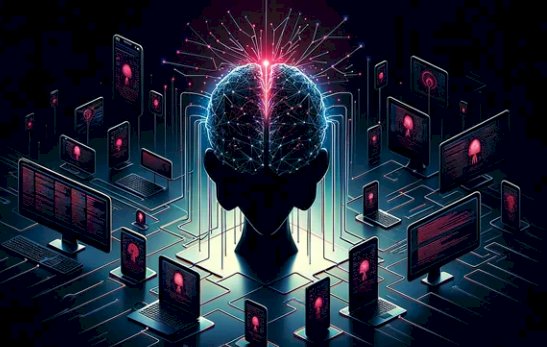AI in Threat and Malware Detection

Introduction
As cyber threats continue to evolve, traditional security measures struggle to keep up with sophisticated malware and attack techniques. Artificial Intelligence (AI) has emerged as a game-changer in cybersecurity, enhancing threat detection, malware analysis, and response strategies. AI-driven security solutions offer real-time detection, predictive analysis, and automated threat mitigation, significantly improving the resilience of digital systems.
Role of AI in Threat and Malware Detection
AI enhances cybersecurity by leveraging machine learning (ML), deep learning, and big data analytics to detect and respond to cyber threats. Below are the key areas where AI contributes to threat and malware detection:
1. Real-time Threat Detection
AI-powered security tools continuously monitor networks, systems, and applications to detect suspicious activities in real-time.
-
AI identifies anomalies by analyzing behavioral patterns and historical data.
-
It can detect zero-day attacks, which traditional signature-based methods often miss.
2. Behavioral Analysis of Malware
Traditional antivirus solutions rely on known signatures to detect malware. AI takes a proactive approach by analyzing malware behavior.
-
AI models assess file characteristics, execution patterns, and code structures to classify new threats.
-
Sandboxing techniques powered by AI help in isolating and analyzing malicious software before it affects the system.
3. Predictive Threat Intelligence
By leveraging machine learning algorithms, AI can predict future cyber threats based on past attack patterns.
-
AI-driven threat intelligence platforms analyze vast amounts of cybersecurity data.
-
AI forecasts potential attack vectors, helping organizations strengthen their defenses before an attack occurs.
4. Automated Incident Response
AI automates the process of identifying and mitigating cyber threats, reducing the burden on security teams.
-
AI-driven Security Orchestration, Automation, and Response (SOAR) platforms take instant action on detected threats.
-
Automated responses include blocking malicious IPs, quarantining infected files, and alerting security teams.
5. Phishing and Social Engineering Detection
AI analyzes email patterns, website structures, and user behaviors to detect phishing attempts.
-
Natural Language Processing (NLP) helps in identifying deceptive emails and fraudulent websites.
-
AI-powered spam filters improve email security by distinguishing genuine communications from malicious ones.
6. Deep Learning for Advanced Threat Detection
Deep learning algorithms enhance AI's capability to recognize complex cyber threats.
-
Neural networks analyze vast datasets and detect even the most sophisticated malware strains.
-
AI adapts to new attack strategies by continuously learning from cybersecurity incidents.
Challenges in AI-driven Threat Detection
Despite its benefits, AI in threat detection faces some challenges:
-
False Positives: AI systems may flag legitimate activities as threats, leading to unnecessary alerts.
-
Adversarial Attacks: Cybercriminals may manipulate AI models by injecting misleading data.
-
Data Privacy Concerns: AI systems require access to large datasets, raising privacy and compliance issues.
-
High Implementation Costs: AI-powered security solutions may be expensive for small businesses.
Future of AI in Cybersecurity
AI will continue to shape the future of cybersecurity by integrating with blockchain, quantum computing, and other advanced technologies. The development of self-learning AI models will enhance predictive security, making threat detection faster and more accurate.
Conclusion
AI is revolutionizing threat and malware detection by offering real-time monitoring, predictive analysis, and automated response capabilities. While challenges exist, ongoing advancements in AI-driven cybersecurity solutions will help organizations stay ahead of evolving cyber threats. Investing in AI-powered security frameworks is essential for protecting digital assets in an increasingly complex threat landscape.


















